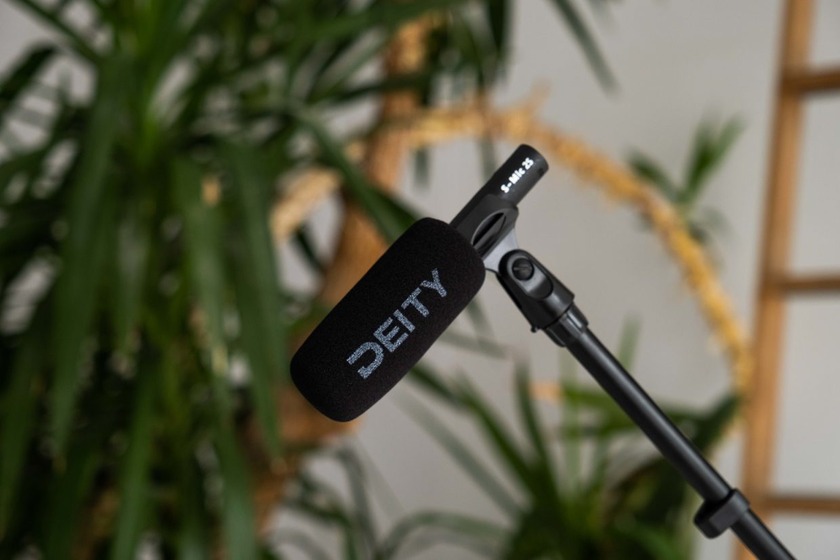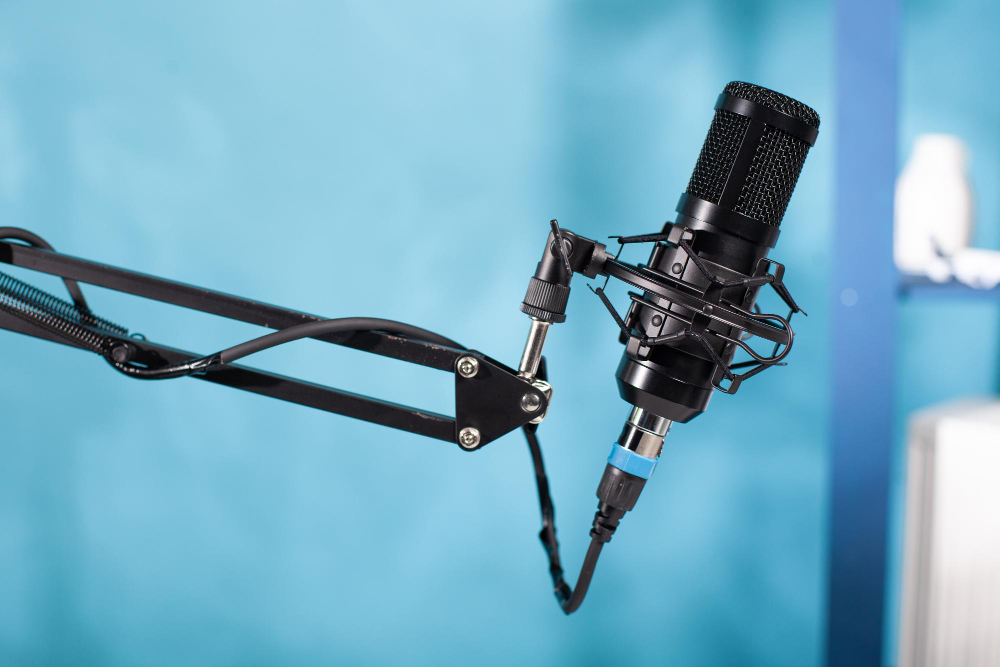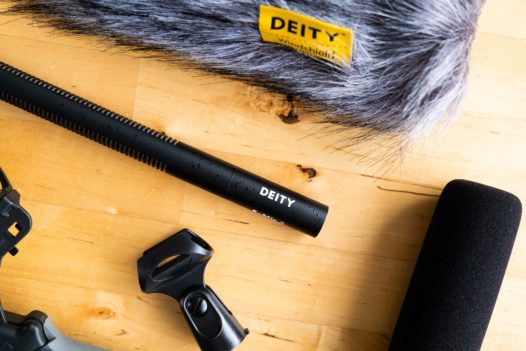Condenser mics are among a filmmaker’s handiest tools, but they’re not all created equal. Here’s the difference between small and large condenser microphones.
Are you uncertain whether you should purchase a small or large condenser microphone? Not sure what their individual functions are and how they differ? We have a guide just for you. While they’re both condenser microphones, they each have strengths in different applications.
Here’s everything you need to know about both types of microphones and their functions.
What Is a Condenser Microphone?
A condenser microphone consists of a diaphragm placed close to the back plate of the microphone. Sound waves are essentially vibrations of certain frequencies, so when the sound hits the diaphragm, it vibrates, which, in turn, changes the distance between the diaphragm and the backplate. A result of this variation of distance produces an electrical signal. Condenser microphones typically have a cardioid polar pattern, a perfect all-rounder for any type of sound.
Condenser microphones are one of the most commonly used microphones in the film and audio industry. They perform at professional standards and are ideal for recording dialogue, ambience, sound effects, and music. But when you search for “condenser microphones” in trusty ol’ Google, you’ll be greeted with small and large condenser microphones. So, what does each one do, and which scenarios are best for each one?
Functions of a Small Condenser Microphone

Small condenser microphones are best used in scenarios when directional pickup is needed. Boom operators will tend to use small condenser microphones when directionality (in addition to high-quality audio) is their main priority. The actors may be moving a lot so it’s ideal for boom operators to not only be skilled in moving with the talent but also have a directional microphone will allow more accurate recordings.
Pros of Small Condenser Microphones
Sound artists will opt to use small condenser microphones not only for directionality but also for their neutral sound. Small condensers are great for these applications if you want a true representation of the sound you’re recording. Yes, microphones can produce inaccurate recordings! Some may boost or attenuate certain frequencies. Usually, cheap small condensers will be within this category, so investing in a good one will be better in the long run.
Furthermore, small condenser microphones have a high SPL (Sound Pressure Level). This means that they can handle much louder and sharper noises (transients) before hitting a certain threshold which causes distortion. This works well if you need to have a closer proximity to the sound source as the distance between the diaphragm and the backplate is much longer, thus reducing distortion.
Lastly, small condenser microphones are, well, small! They are super ideal for those who are always on the move.
Cons of Small Condenser Microphones
While small condenser microphones are better at handling louder noises, this does mean they are less sensitive. The lower sensitivity means that the output signal in comparison to higher sensitivity microphones is quieter.
Additionally, small condenser microphones are prone to high self-noise levels. The more money you are willing to invest in small condenser microphones, the less noise they will produce.
Functions of a Large Condenser Microphone

Let’s move on to the bigger sibling: the large condenser microphone. These microphones came before the small condensers and were known for their exquisite warmth in sound production.
They have a larger build to compensate for the electronic noise within the microphone, meaning that these microphones are perfect for recording much quieter sounds, without picking up any electrical hum.
Pros of Large Condenser Microphones
Large condenser microphones are best used for the human voice as they result in a warm and professional sound. In comparison to its smaller siblings, large condensers perform better at picking up lower frequencies, which heavily favor vocal recordings.
As mentioned, the noise levels of large condenser microphones are much quieter than small condenser microphones. If you are recording ADR in a recording studio, which is generally a very quiet environment from the acoustic treatment, using a large condenser microphone is super beneficial.
Recording sounds that are generally quieter means that you will need a more sensitive microphone. Luckily, large condenser microphones are known for their high sensitivity, meaning less gain is required for sounds that are on the quieter side, which, in turn, causes less noise.
Cons of Large Condenser Microphones
With its high sensitivity and low noise, large condensers do come with a few limitations. While they can result in low noise for softer sounds, this means they naturally have a lower SPL. While they are much larger, they unfortunately are more susceptible to distortion from louder sound sources.
Unlike the small condenser microphones, their directionality isn’t as narrow. Large condenser microphones will likely pick up sounds from the sides, which is why it’s important to use these microphones in quieter environments. Small condensers can sacrifice this as they can reject sounds from the sides much better.
Lastly, they are much bigger. You may think, “Well just put it in a case then?” Large condensers need to be handled with great care as they are more delicate than small condensers. So you will need to additionally spend on a robust case if you are frequently on the go.
Microphone recommendations
Need some recommendations for some top-quality condenser microphones? We got it covered! Here are some staple small and large condenser microphones that will be a great addition to your gear set-up.
Small Condenser Recommendations
Small condenser microphones can be used as stereo pairs, and many microphones (including these here) have deals where you can purchase them as matched pairs. This is ideal for ambient stereo recordings! The prices below are for a single microphone.
- AKG P170 $99
- sE Electronics sE7 Small-Diaphragm Condenser $109
- RODE NT5 $219
- Deity S-Mic 2 $359
- Neumann KM 184 $849
Large Condenser Recommendations
These are the best large condensers in the market and are highly rated by users. The RODE NT1 is a staple in the studio and has been a favorite for years. For more premium sound production, the Neumann TLM 102 is used by many professionals in the audio industry.
- Audio Technica AT2035 $149
- RODE NT1 $179
- Sennheiser MK-4 $299.95
- Lewitt LCT 440 Pure $289
- Neumann TLM 102 $899
Cover image via Deity.
Looking for filmmaking tips and tricks? Check out our YouTube channel for tutorials like this . . .



